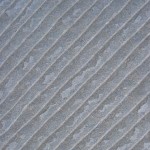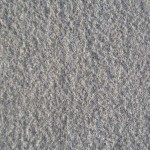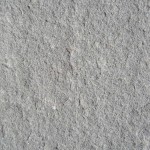Natural stone classified according to their mineral content and the process of their formation are one of our company cornerstones, based on long years of studies and close experience with wide range of the stone materials from various destinations around the globe.
For long years our company is involved in projects there where is a need for experienced consultancy of using right selected materials for external facing and internal facing materials as well as for the right materials to be used for internal and external paving. We serve our customers with good stones which are characterized by durability, hardness, strength, amenability to dressing, appearance, and weight, fineness of grain, compactness, porosity and absorption.
The indicators separate rocks into three types: igneous, sedimentary, and metamorphic of which we can supply what ever needed in a project:
Sedimentary stones
Sedimentary stones are layered rocks, formed through the accumulation and solidification of sediments, which may originally be made up of minerals, rock debris, or animal or vegetable matter. These stones come from such organic elements as glaciers, rivers, wind, oceans and plants. Tiny sedimentary pieces break off from these elements and accumulate to form rock beds. They are bonded through millions of years of heat and pressure and include limestone, sandstone and travertine.
The different types of sedimentary stones are:
- Sandstone “Siliceous” is result of some pre-existing rock’s demise through the weathering process.
- Biogenic stones are produced by living organisms such as marine creatures or vegetation which eventually died and the remains become part of the sediment on the bottom of ancient sea beds. Some of the Biogenic stones are certain Limestone‘s, Coral stones, Fossil stone, Shell stone “Calcareous”.
- Travertine and certain Limestone’s are produced by inorganic chemical material being deposited on the floor of ancient sea, lake beds and springs through the process of precipitation or evaporation. The white deposits in kettles in which hard water has been boiled is a good example of this type of stone.
- Tuff stones are composed of volcanic ash with a variety of secondary older rock materials from volcanic and Igneous in nature.
Igneous stones
Igneous stones are formed from molten or partly molten material i.e. magma, through solidification of magma. Lava is a form of magma cools and solidification on the surface of the earth. Liquid magma cools and solidifies underneath the Earth’s surface, and then the mineral gases and liquids penetrate the stone and create new crystalline and various colors. Some igneous rocks cool and harden deep underground (granite, quartz monzonite, and diorite) and may later be exposed by erosion, whereas others reach the surface as basaltic lava flows and other volcanic deposits (such as rhyolite).
Of all igneous rocks, granite is the most common choice. It is a coarsely crystalline unstratified rock composed of alkali feldspars, quartz, mica and hornblend. Since granite is highly speckled, it varies greatly in color depending on the range of the minerals present and the location of the quarry. When the mica in granite is white it is known as muscovite, white it is dark it is biolite.
Metamorphic stones
Metamorphic rocks formed from pre-existing rocks that were altered by high heat, pressure, and/or the chemical actions of fluids and gases. Some common metamorphic building stones are quartzite (altered sandstone), marble (altered limestone), slate (altered shale), and granitic gneiss (altered granite; gneiss is pronounced “nice”).
Beyond the above described we supply mineral stones above described
Mineral stones
Minerals are distinguished by various chemical and physical properties. Differences in chemical composition and crystal structure distinguish various species, and these properties in turn are influenced by the mineral’s geological environment of formation. Changes in the temperature, pressure, and bulk composition of a rock mass cause changes in its mineralogy; however, a rock can maintain its bulk composition, but as long as temperature and pressure change, its mineralogy can change as well.
Common distinguishing characteristics include crystal structure and hardness, luster, transparency, color, tenacity and specific gravity (mass of the same unite volume. More specific tests for minerals include reaction to acid, magnetism, taste or smell, and radioactivity. Of the wide verity of mineral stones onyx takes important place in architecture and interior design.
Our company based in Haifa–Israel, is present in projects where grantee is needed a for the requested product supply. Based on standardization of manufactured goods which require attention provided by a technical code based on ASTM (American Society for Testing and Measurement) or according to CEN (Centre European de Normalization).
We are able to supply any dimensional stones from free length to defined measure up to Taylor made project by Cut to Size shop drawing under rules of quality from compliance with technical product specification to checking and certifying the production process under state of art.
Our work is based upon the following proceed:
Samples: Methods that need to be used for obtaining the representative samples for later testing in the quarries, in the factory or the buildings.
Reference samples: Characteristics of the commercial samples delivered to clients.
Initial testing: Tests that ought to be done before placing the product in the market, to determine the properties declared by the manufacturer and compliance with applicable norm.
Control of production in factory: Consists of tests and internal controls that should be done regularly in the production process and the final product, to assure that the product placed in the market conforms with the relevant norm and to the values declared by the manufacturer.
System of verification of conformity that will be applicable to the product: Depending on the product, in some cases is permitted the declaration of conformity by the manufacturer, and in other cases, the certification of conformity by an authorized organization will be supplied.
Our company supplies Granite, Limestone, Marble, Onyx, Travertine, as well as other materials among the Natural stones, using the appropriate material for the project due to requested colors and shades and desired finishes.
Technical data
The Mohs scale of mineral hardness is based on the ability of one natural sample of matter to scratch another. The samples of matter used by Mohs are all minerals. Minerals are pure substances found in nature. Rocks are made up of one or more minerals. As the hardest known naturally occurring substance when the scale was designed, diamonds are at the top of the scale. The hardness of a material is measured against the scale by finding the hardest material that the given material can scratch, and/or the softest material that can scratch the given material. For example, if some material is scratched by apatite but not by fluorite, its hardness on the Mohs scale would fall between 4 and 5.
The Mohs scale is a purely ordinal scale. For example, corundum (9) is twice as hard as topaz (8), but diamond (10) is four times as hard as corundum.
The table below shows comparison with absolute hardness measured by a sclerometer.
|
Mohs hardness |
Mineral |
Chemical formula |
Absolute hardness |
|
1 |
Talc |
Mg3Si4O10(OH)2 |
1 |
|
2 |
Gypsum |
CaSO4·2H2O |
3 |
|
3 |
Calcite |
CaCO3 |
9 |
|
4 |
Fluorite |
CaF2 |
21 |
|
5 |
Apatite |
Ca5(PO4)3(OH–,Cl–,F–) |
48 |
|
6 |
Orthoclase Feldspar |
KAlSi3O8 |
72 |
|
7 |
Quartz |
SiO2 |
100 |
|
8 |
Topaz |
Al2SiO4(OH–,F–)2 |
200 |
|
9 |
Corundum |
Al2O3 |
400 |
|
10 |
Diamond |
C |
1600 |
Specific gravity is the ratio of the density (mass of a unit volume) of a substance to the density (mass of the same unit volume) of a reference substance.
Birefringence is the optical property of a material having a refractive index that depends on the polarization and propagation direction of light.
Surface finishes
Stones have different finishes or surface textures, according to their formation. Nowadays we can perform desired surface textures which donate to each stone a different look which makes the stone being part of Building architecture and design as well as for Landscape architecture.
We can perform various finishes to adapt the material to different usage request for Interior facing or Exterior facing as well as for Interior paving or exterior paving.
The list of surface finishes includes the following:
- Polished surface
Polished surface texture is a reflection of polished crystals that bring out the brilliant colors and grains of natural stones. The shine on stone surface comes from polishing with special assigned bricks and powders used during slabs fabrication and not from any coating. - Honed surface
It is produced by grinding a surface with high grit material to a uniform specification with out producing a reflective surface. Honed colors are not as vibrant as polished stones. A smooth finish with a slight sheen is produced by using a polishing head. The honed surface is smooth and might become porous. - Flamed surface
It is a rough surface that is developed due to the bursting of crystals when the stone is heated. This surface gives an irregular finish. - Bush-hammered surface
A pounding action that develops a textured surface. The top surface is pneumatically tooled to produce a pitted finish surface. - Sandblasted surface
Producing a finish similar to cleft sand blasting involves projecting a high-pressure airline coarse-grained grit onto the top surface of the stone. It is characterized by a textured surface with matte gloss. - Grooved chiseled surface
Stone chisels are used to carve or cut stone, bricks or concrete slabs. To cut, as opposed to carve, a brick bolster is used; this has a wide, flat blade that is tapped along the cut line to produce a groove, then hit hard in the center to crack the stone. - Saw-cut surface
Sawn surface is coarsely polished leaving a semi-smooth, regular finish. This finished is done by using a gang saw.
- Striped chiselled
- Bush hammered
- Flamed
- Sanded







